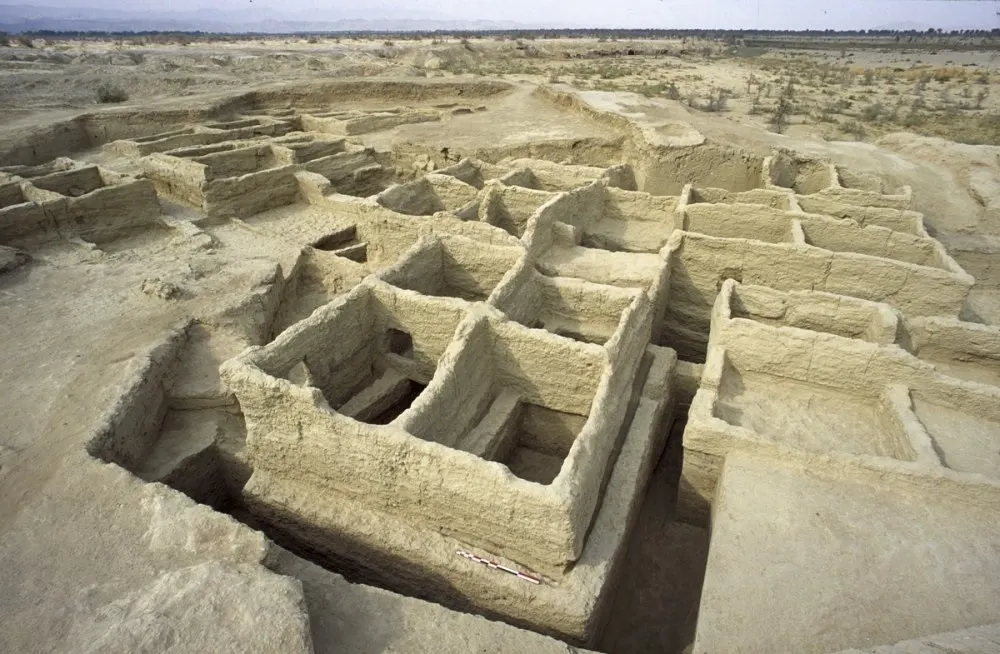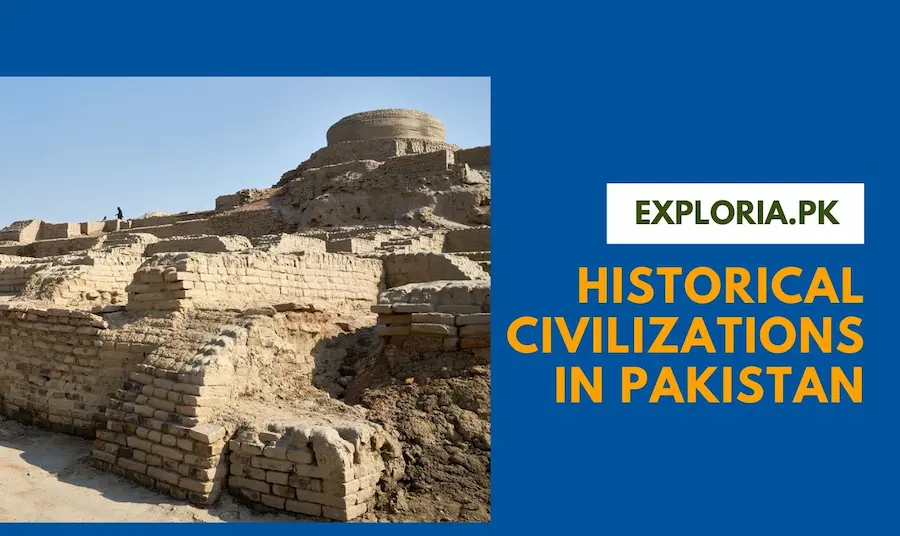Pakistan has seen a number of historical civilizations come and go. These civilizations have always had a big impact on how societies, the nation, and their cultural contribution to the world have evolved. They are the origin of prosperity, science, and modern technology. Pakistan was influenced by various civilizational traditions, which gave Pakistan several unique features.
Various ethnic groups occupied the areas that make up modern-day Pakistan at various points in time when they were united under a single ruler or administration. Before the creation of the state of Pakistan in 1947, certain villages had existed there for decades or perhaps millennia.
Historical scriptures identify a number of cities as ancient settlements, and in modern-day parts of Pakistan like Swat, Sialkot, and a few other places, castles have been constructed on hills, valleys, and even rivers.
Historical civilization in Pakistan can be usually classified into two prehistoric age civilizations and the first three Islamic global kingdoms. With a Muslim majority in each region, Punjab was split in the Middle Ages between India and the Mughal Empire.
Both India and Pakistan gained independence after the British overpowered these states. The Indus Valley Civilization, which flourished between 3500 BC and 1500 BC, brought about the Dawn of Pakistan. It was a Bronze Age civilization that prospered at the time, especially in the contemporary Pakistani provinces of Sindh and Punjab.
Pakistan has an ancient legacy that includes a number of past civilizations that have greatly influenced the country’s advancement. Pakistanis take great pride in being descended from these civilizations, which are still present in the nation and strongly integrated into Pakistani society. In order to pique your historical curiosity, we have highlighted a list of Pakistan’s most notable civilizations below. So read on and have fun!
Famous Civilizations of Pakistan
Soan Civilization

The earliest known prehistoric civilization in Pakistan is the Soan Civilization, which was a Stone Age civilization that thrived in the Punjab region. The Soan Valley served as the birthplace of the stone-age civilization, which later spread to India, Nepal, and the Himalayas. Between the third and first centuries, the civilization reached its height, and evidence of its existence may very well be found at places like Harappa. It is said to have existed before the Indus Valley Civilization.
Archaeologists originally derived the name of the Soan Civilization from the River Soan in the Soan Valley; today, it is used to refer to a group of Neolithic individuals who inhabited the Swat Valley and nearby areas in the north-west of modern-day Pakistan. One of the earliest known civilizations in South Asia, it is thought that these people lived in the area from at least 9000 BC to 5500 BC.
The archaeological evidence shows that the people of this culture were skilled in making pottery vessels and jewelry items. Soans was also known for their writing, mathematics, art, and music skills. They also predominantly ate millet, wheat, and barley because the majority of the population was lactose intolerant.
Mehrgarh Civilization

A Neolithic civilization known as the Mehrgarh civilization existed in Balochistan between 7000 and 2500 BC, when it may have been subjugated by the Baloch people. It is often referred to as “Paleo-Indus site” or “Mehrgarh I.” A Neolithic archaeological site called Mehrgarh can be found near Bolan Pass between the cities of Quetta, Sibi, and Kalat in Balochistan, Pakistan.
It was inhabited around 1.8 million years ago, during the late Pleistocene epoch. Prior to being discovered during excavations directed by Alexander Cunningham beginning in 1868, Mehrgarh had spent the majority of its history undiscovered by ancient or medieval civilizations. Since 2004, the area has been investigated by University of California Berkeley archaeologists under the direction of Andrew Sherratt, who has discovered a number of relics that are roughly 1,000 years older than those found at other sites in Balochistan as well as in areas of southern Iran and northwest India.
Kot Diji Civilization

The Kot Diji culture lasted from about 2500 BC to 1500 BC and is named after the type site of Kot Dijian near Mohenjo-Daro in the Sindh province of Pakistan. The Kot Diji Fort, which was constructed by Mir Suhrab of the Talpur dynasty, who ruled Upper Sindh then, is located at the base of the Rohri Hills. This fort, which was constructed on the crest of a very steep hill, has been preserved and protected.
The Kot Diji Civilization was regarded for its masterful terracotta production, and its people were known as brilliant artisans with extraordinary terracotta-making abilities. Crop farming and raising cattle were practiced there. The culture was recognized as the Harappan Civilization’s precursor.
Indus Valley Civilization

Known to be one of the ancient civilizations of Pakistan, between 7000 and 600 BCE, the northern Indian subcontinent experienced the zenith of the Indus Valley Civilization, a thriving cultural and political body. After reaching its climax, the civilization had seen a decline during the 1300 BCE.
The Harappan Civilization is another name; its contemporary name comes from the fact that it was located in the Indus River in the Valley of Indus. Harappa and Mohenjo-Daro are the two most important archaeological cities of this civilization (located in modern-day Pakistan).
The majority of the populace appears to have been artisans, farmers, and tradesmen. Delicately carved soapstone seals, which archaeologists believe were used for identifying individuals in barter, were among the hundreds of items unearthed at the numerous sites.
Although this is a relatively new phenomenon, the Indus Valley Civilization is now frequently contrasted with the much more well-known civilizations of Egypt and Mesopotamia. Since the Indus Valley Civilization’s archaeological discoveries were relatively recent, it is now believed that numerous of the achievements and “milestones” credited to Egypt and Mesopotamia may possibly have been the achievement of the Indus Valley Civilization.
Conclusion
The people of Pakistan are still aware of and keep these ancient and historic civilizations in their memories through excursions to the archaeological sites that are still visible in various regions of Pakistan. Visit Pakistan and see all of these historic locations for yourself!


0 Comment